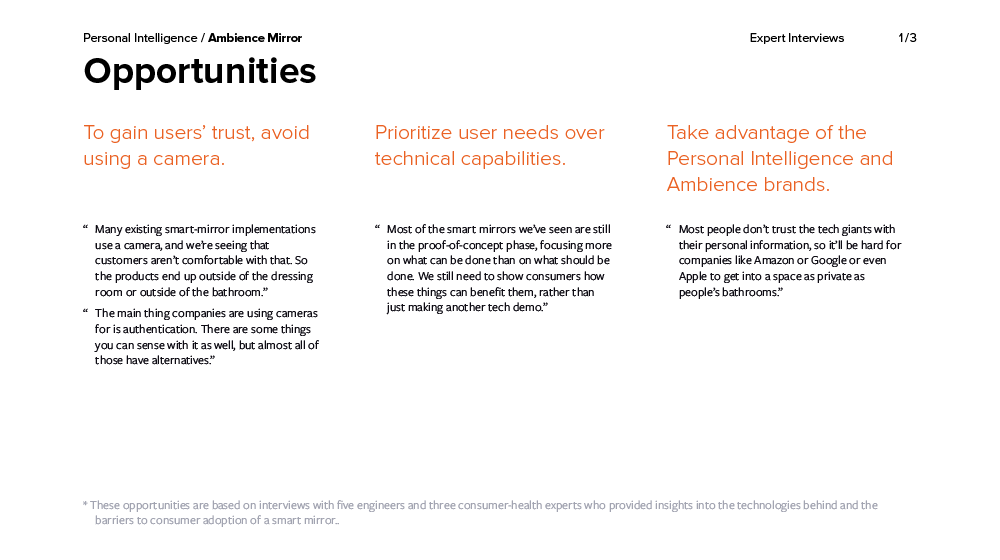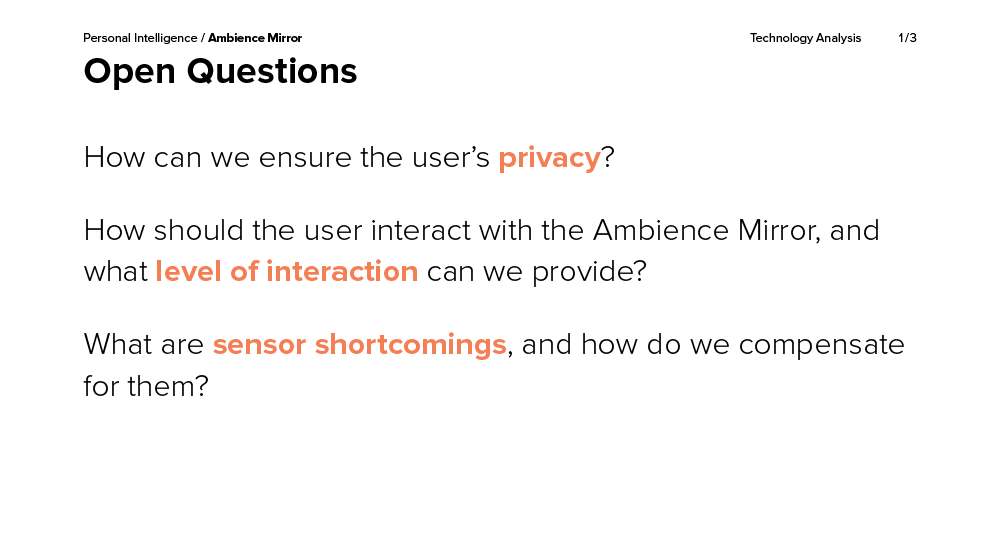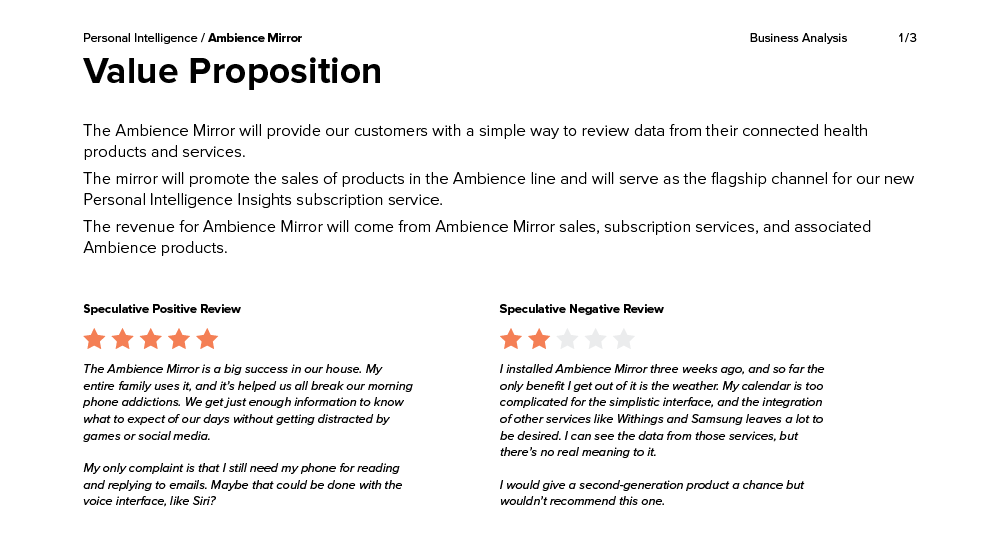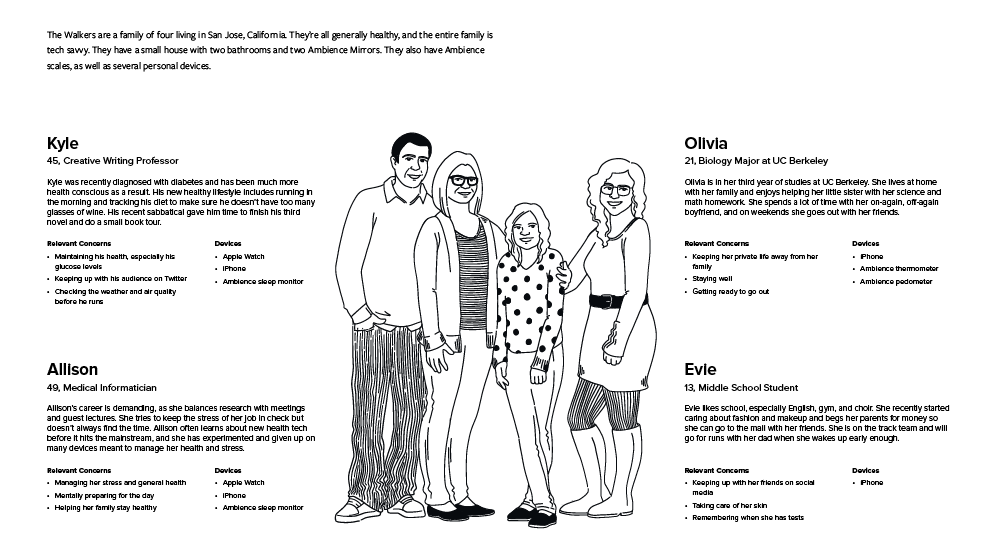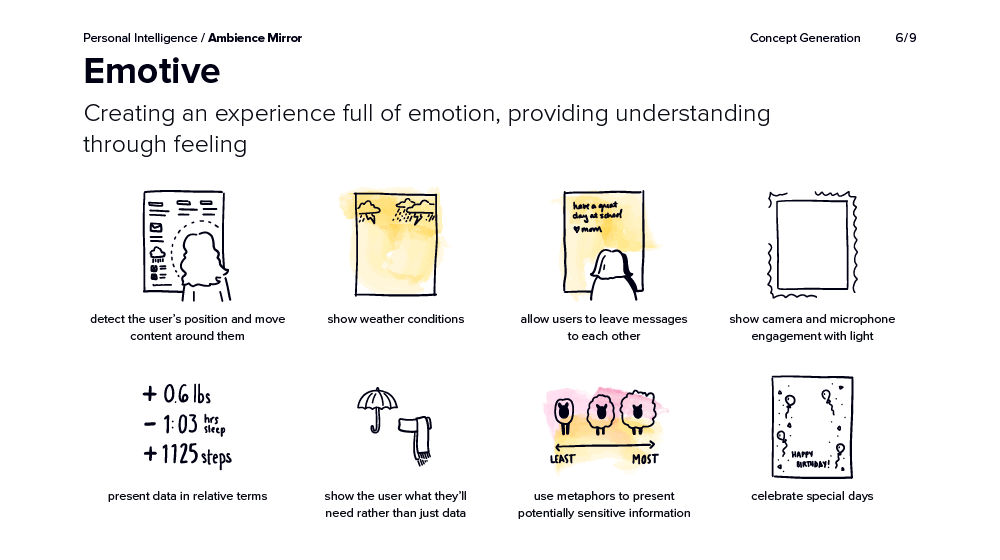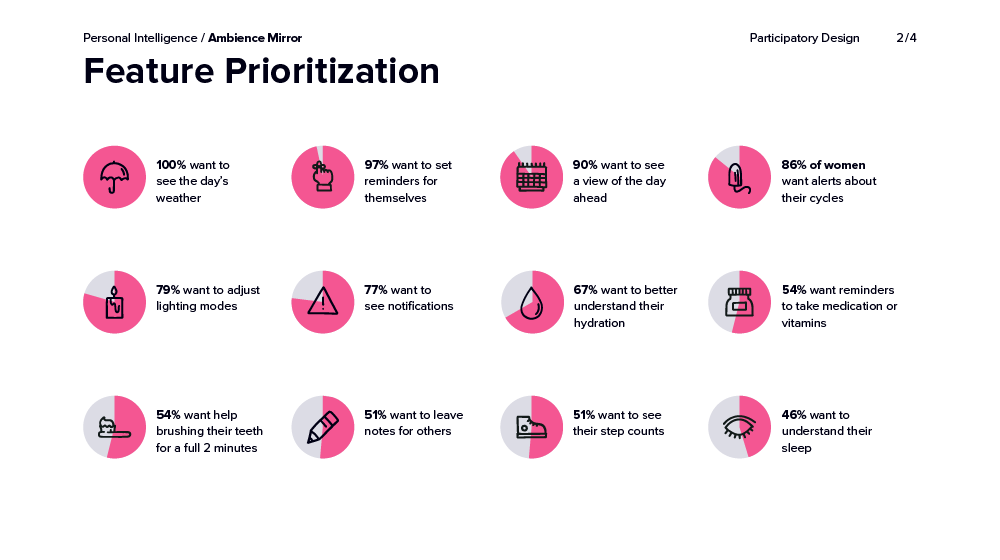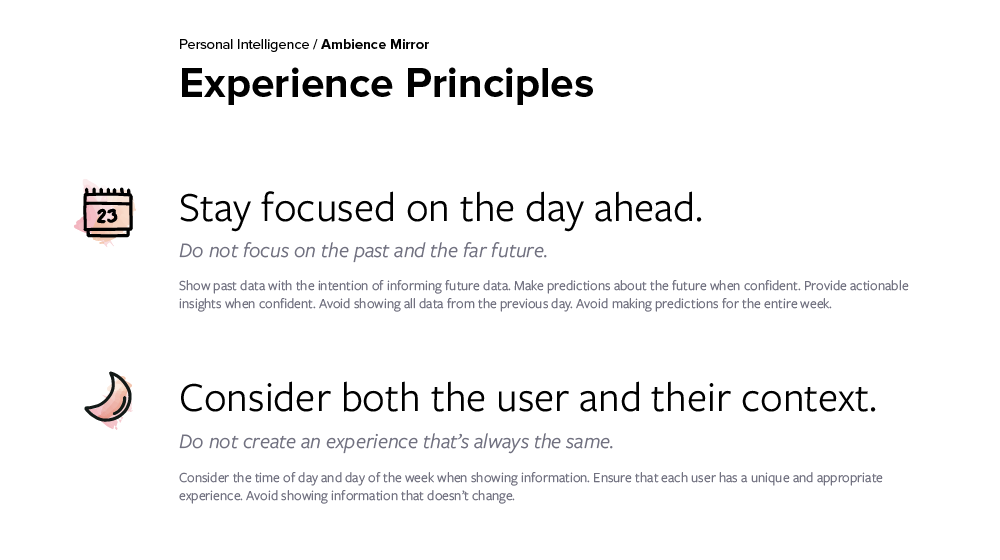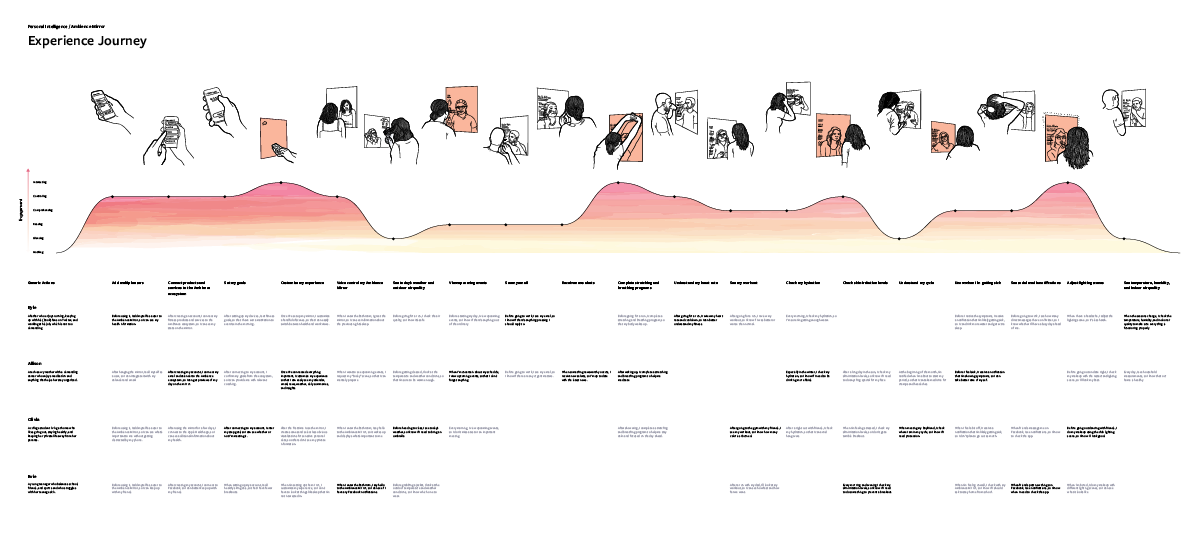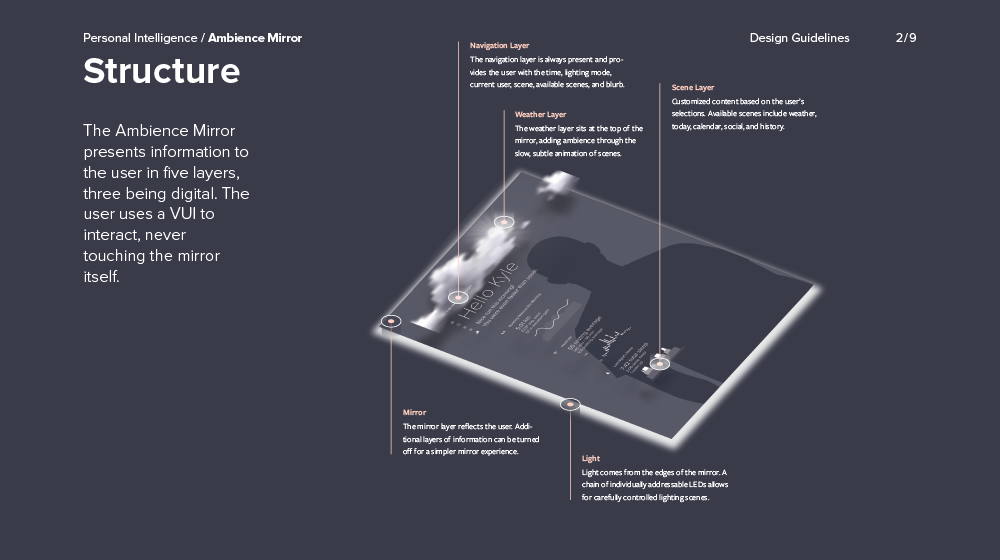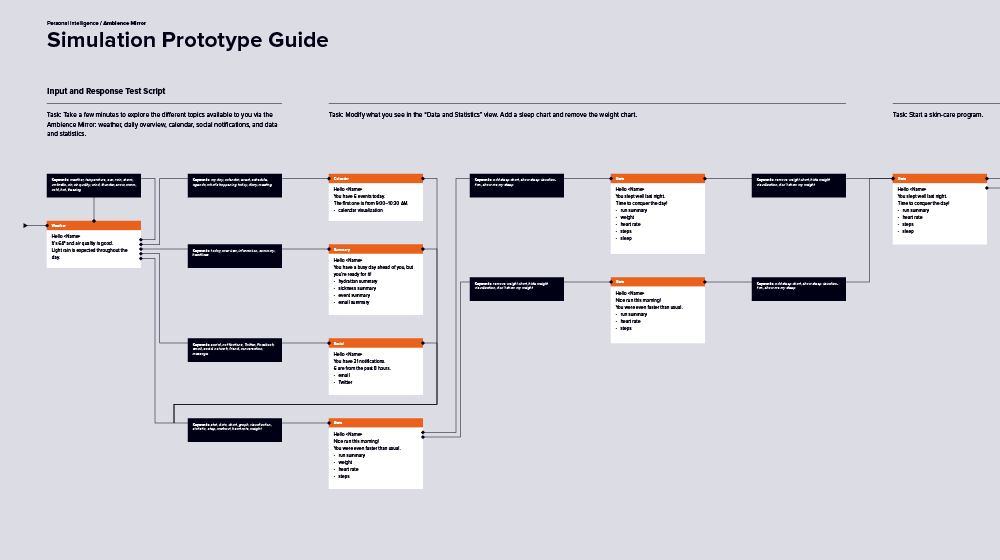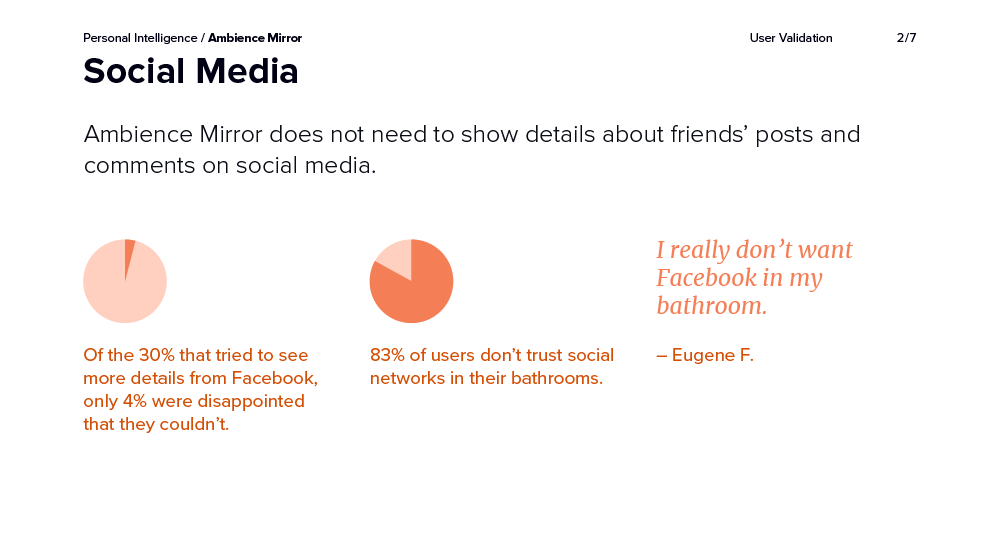Examples
Ambience Mirror
In a world where connected products and digital interfaces consume our undivided attention, Personal Intelligence seeks to provide users with data and information through ambient experiences. While their sensors don’t require extra effort from users, their apps require focus in a way that’s inconsistent with their brand messaging. We were engaged to develop an ambient smart-mirror concept capable of providing users with information in ambient and less attention-grabbing ways. Once complete, our work will be handed off to production designers and engineers to build and implement.
With a project focused on concept development, discover and define activities are important to set a solid foundation. This project will start with expert interviews and technology and business analysis to determine likely users and user needs. These findings will be summarized in personas and then used to generate concepts with the client. Concepts will be refined into features, with users providing input via participatory design. Experience principles will guide future design, and an experience journey will provide a summary of how the team expects users to engage with the features of the Ambience Mirror. From here, the design team will create mock-ups, design guidelines, and a prototype to be tested and refined with users.
The proposed project will take twelve weeks with heavy user involvement. Two weeks will be committed to research and persona creation, followed by four weeks to develop and test concepts and features with users. The last half of the project is for refining the design with prototypes and user validation and creating light documentation for the internal design and development teams to use as they take the design forward.
Discover
Expert Interviews
Ambience Mirror interviewed engineers and health experts to better understand the technology behind and the current ecosystem around smart mirrors. The artifact highlights opportunities for the development of the product and service.
Discover
Technology Analysis
Ambience Mirror’s technology analysis focuses on finding which of the available technology options will provide the best user experience by addressing a series of specific concerns. This technology analysis also looks across the ecosystem to determine how the Ambience Mirror will share data with third parties.
Discover
Business Analysis
Business analysis activities for the Ambience Mirror look to establish a timeline for rolling out the product across different markets, to plan integrations, and to create an initial prioritization of potential features.
Define
Personas
The four personas for Ambience Mirror represent a broad base of potential users while all being a part of the same family. Because the product exists in a shared space, the four personas will all engage with the same Ambience Mirror at some point in their day.
Define
Concept Generation
Concepts for Ambience Mirror were generated to a series of nine provocations. Participants voted on ideas before the design team synthesized them into five potential design directions for presentation.
Define
Feature Definition
The features for Ambience Mirror are documented in a wiki system that has an overview table linking to details and mock-ups for each individual feature.
Define
Participatory Design
Ambience Mirror asked users to sort a series of feature cards by which were important and which weren’t. Each user was allowed to choose up to ten features for the important bucket. Users described their choices throughout the process.
Define
Experience Principles
Experience principles for Ambience Mirror describe a product differentiated from others in the market. Each principle describes what should be done, what should be avoided, and examples of adherent decisions.
Define
Experience Journey
The experience journey for Ambience Mirror looks at how the four personas engage with the same product over time. Across all personas, it seeks to capture general actions and levels of engagement, highlighting a single specific engagement within each illustration. Color highlights which moments the team has decided to prioritize across the experience.
Refine
Mock-Ups
The mock-ups for Ambience Mirror highlight how the layout and rule set can be used to provide value to the user across a handful of prioritized features.
Refine
Design Guidelines
This excerpt from Ambience Mirror’s design guidelines shows how each scene is constructed via layers of elements and then how those elements are composed of just a handful of simple ingredients.
Build
Prototype
Ambience Mirror uses multiple prototypes. A proof-of-concept prototype (not shown) is maintained throughout to confirm that all designs and integrations are possible. The mirror also relies on a simulation prototype for user validation, with a designer using a script to react to users’ voice commands.
